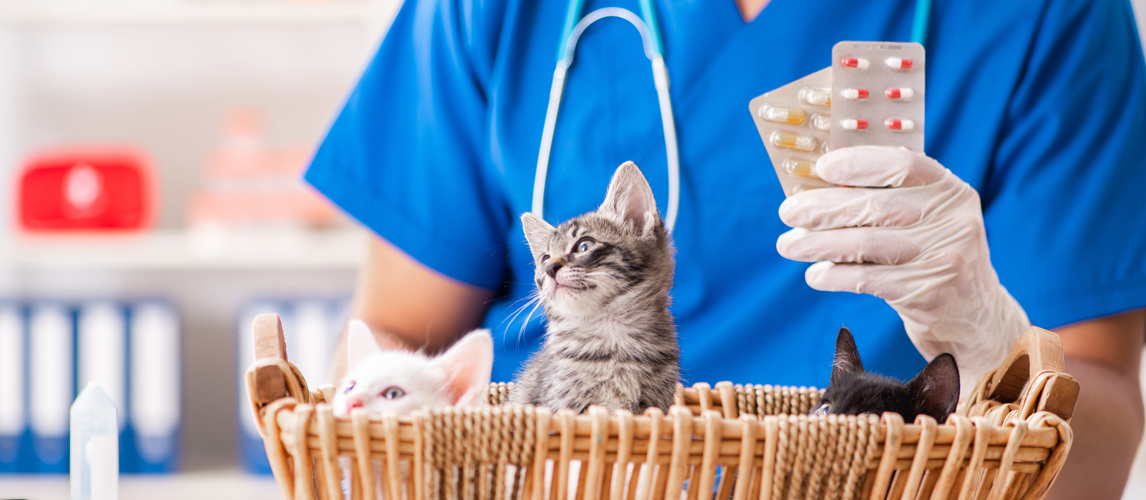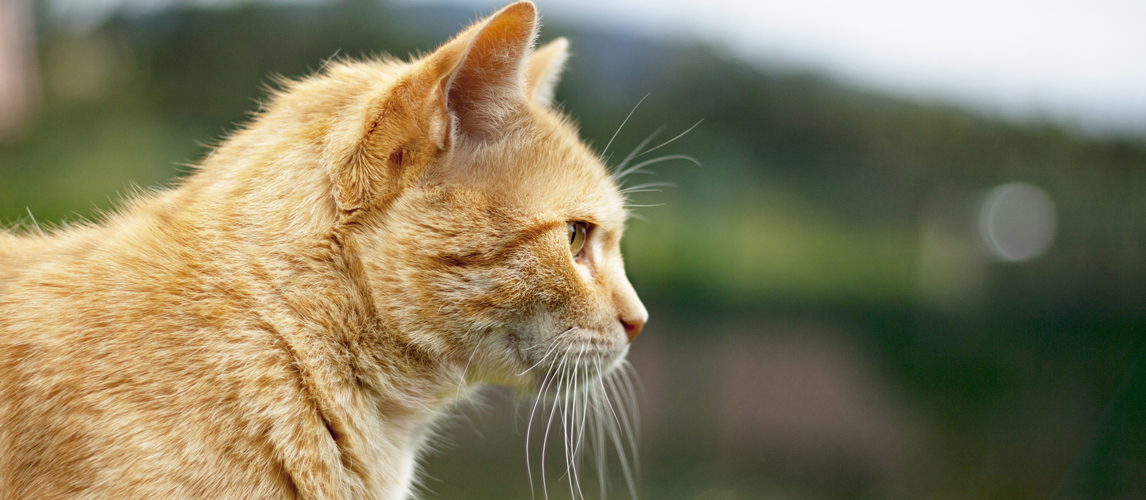Even the most loving and attentive cat owners have failed to spot fairly major illnesses in their cats. This is because moggies are conditioned by nature to hide the fact that they are ill. There are thousands of years of evolution to thank for this. In nature, illness is a sign of weakness. A wildcat that shows that it is ill is going to get picked on by prey and will lose its status with the rest of their peer group.
To make things even more difficult, they can’t talk so you can’t ask them ‘How are you feeling?’ and they are covered in fur so you can’t easily see what is going on with their body. Older cats and cats with known chronic health conditions need regular check-ups with the vet to make sure that they are not in pain or discomfort.
Owners of younger cats still have a problem. How can you see past the act that they are putting on and detect when they are really sick?
Luckily, animal behaviour experts and vets have put together a list of signs that will indicate that your cat is sick. Here are the top six signs that you need to look out for.
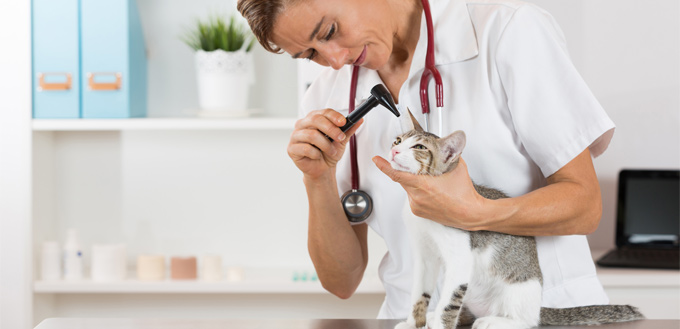
Litter Tray Accidents
Most cats are very co-operative about using their litter boxes and like to keep that area clean and tidy. It is unusual for a cat that is toilet trained to suddenly start pooping and peeing outside of their litter tray.
Related Post: Best Cat Litter Box
If you come home to a rather unpleasant deposit on your kitchen floor, it could be a sign that your kitty is unwell. Start by ruling out any obvious causes. Was your cat prevented from reaching the litter tray by a door that had slammed shut or because they were scared by a new pet or baby in the family? Have you forgotten to clean out the litter tray and so your cat has decided that it is just too dirty for them to use?
If there is no other reason for them failing to use the litter tray, and if it happens several times over a number of days, it can mean that there is an underlying health problem. It can be a sign of stress and this may be brought on a by a house move or by a new animal in the household. Diseases of the kidney, the urinary tract and bladder can result in cats peeing in random places. Kidney disease is quite a common ailment for cats and they can also suffer from urinary tract infections and kidney stones. Female cats and older cats are more likely to get a urinary tract infection but it is a more complicated disease to treat in male cats and it can become a medical emergency. Other possibilities are arthritis, cancer and feline interstitial cystitis. So, if you notice any stray puddles or if your cat is straining to pass urine, you need to get them checked over
Changes in Poop
The same is true for poop. It’s not a very pleasant subject to think about but you will be familiar with the usual consistency of your cat’s poop and with how often they usually poop in their litter tray (usually once or twice a day). Any change in this normal routine could indicate that something is wrong. If your kitty has not produced any poop for a few days or if they appear to be straining and not producing anything, it could be a sign of constipation. Another sign is the production of small, hard, poops that seem to make your cat uncomfortable when they pass them. There are many causes of constipation in cats or they may have a blockage somewhere in their gastrointestinal tract. Furballs are a leading cause of this. You may notice weight loss and lack of appetite at the same time or your cat may be in obvious discomfort as they try to pass a poop. This definitely needs to be discussed with your vet.
Poop that is much runnier than normal (deposited in or out of the litter tray) is also a cause for concern. A one-off runny poop is not usually a problem but diarrhoea that goes on for a few days can lead to dehydration and this is a serious problem. Your cat needs to see a vet right away. Dehydration is especially dangerous in very young kittens, older cats and cats with chronic health conditions.
Unexplained and Sudden Changes in Weight
Some weight changes in cats are to be expected. Obviously, you would expect a pregnant female to put on weight and you can also expect older cats to lose some, but not a lot, of weight due to a decrease in muscle mass. Even a small amount of weight loss or gain is a big deal for a cat. They are very small compared to humans so even if your cat loses only one pound, this is equivalent to ten pounds in a human
Cats can start to put weight on quite quickly. Obesity is a health risk in cats the same as it is in humans so it may be time to make some changes to their diet and get them exercising more. The most obvious explanation for a growing belly in a female is pregnancy but it could also be a condition called pyometra where the uterus (womb) is full of pus. They may not be putting on weight at all, it may be a reaction and inflammation triggered by an internal parasite or a build-up of fluid caused by feline infectious peritonitis or a heart problem. A tumour is another possibility that must be ruled out by your vet.
Sudden weight loss in a cat is always a cause for concern and must always be checked out by a vet. It is important to note whether the weight loss is accompanied by a loss of appetite because that will help to determine the cause. Potential causes include:
- Cancer
- Diabetes
- Inflammatory bowel disease
- Allergies
- Infections
- Parasites
- Organ failure
- Hypothyroidism
Weight loss may be associated with a lack of appetite. A cat that is refusing to eat or drink needs immediate veterinary attention. It often indicates that they are feeling ill and are in pain. Diabetes and kidney disease are potential causes but so is anxiety and depression. It could even be something as simple as a toothache or a mouth injury or lesion. On the other hand, drinking excessively is also a sign of disease including hyperthyroidism and diabetes.
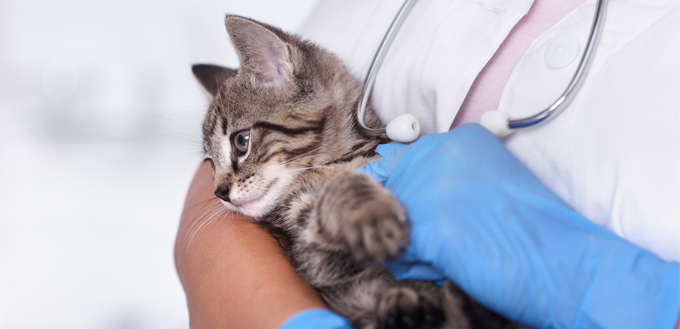
Blood Where You Do Not Expect to Find It
A healthy cat will not have blood in its pee, poop or vomit. The presence of blood in any of these is always of great concern and must be checked out by a vet. Here just a few of the possible reasons:
- Blood in the urine (haematuria). Blood in cat’s urine makes it look pink, red, brown or even black. It is possible that it is caused by a bleeding or clotting disorder which is causing uncontrolled bleeding within the body. However, the most likely explanation is a urinary tract disorder. Your cat may be peeing frequently or straining when trying to pee. Immediate treatment is needed.
- Blood in the faeces (poop). A normal cat poop is around three inches long and has a diameter of about a half an inch. It is well-formed and should be brown or tan in colour. Blood originating lower down the intestinal tract (distal colon and rectal region) will look like normal red blood in the poop or as drops or smears on the sides of the litter box. Blood from higher up in the intestinal tract (small intestine) makes the poop a very dark brown or black colour but can also appear as dark flecks or specks that look like ground coffee. The cause could be anything from inflammatory bowel disease or polyps to tumours or poisoning. Infections and parasites are also potential causes.
- Blood in vomit (haematemesis). Vomiting of blood usually indicates that something is going wrong in the intestines. It is a medical emergency and you must get your cat to a vet as soon as possible. Any persistent vomiting is of concern but vomiting blood is very serious. Bright red and streaky blood indicates damage to the oesophagus (the tube connecting the stomach with the mouth) which could be caused by trauma or inflammation. Dark blood that looks like ground coffee is usually partly digested blood that has come from the stomach or small intestines.
Changes in Activity Levels
It is no surprise that older cats don’t leap around the place as much as kittens. You can expect a natural decline in activity as your kitty gets older. However, if there is a sudden change in their activity levels, it can indicate that there is something wrong.
If a previously active cat stops moving around it is an indication of potential illness or injury. Stiffness and limping in a young cat indicates an acute problem which could result from trauma or even a tumour. In an older cat, it can often be a sign of arthritis but you cannot rule out more serious causes such as cancer.
Any changes in sleeping patterns should also be reported to your vet. Sleeping all day is a sign of illness in a previously active cat. However, roaming around the house and vocalising (making a noise) indicates an underlying issue if this is different from how your kitty usually behaves. A sudden increase in activity in a middle-aged or older cat can be a sign of an overactive thyroid.
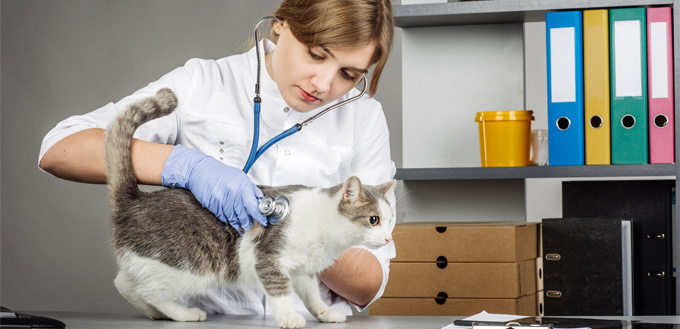
Changes in Behaviour
Every cat lover knows that there is nothing ‘normal’ about cat behaviour but you are the best one to judge if your cat’s behaviour has changed. Any changes that last for more than a day or so need to be reported to your vet.
One very typical example is a cat starting to hide away when they are usually very sociable. Some cats like to take regular breaks from the humans in their household and that is perfectly normal but if the hiding is excessive or unusual for your cat there could be a problem. In the wild, a sick cat will have to hide away to protect themselves and this may be what your kitty is doing. Or it may be that they simply want to be left alone to recover. Hiding can also be a sign of injury and of stress and fear.
Aggression is another sign of illness in cats. If they react aggressively when you touch them in a particular spot, it may mean that it is very sore. It could a sign of an injury, an infection or inflammation caused by something else. A cat that becomes increasingly irritable (especially an older cat) may be in pain from arthritis or another chronic condition or it could be a sign of senility. Hyperthyroidism is a condition that affects the thyroid gland and can make cats hyperactive. They may start acting towards you in an aggressive way.
Changes in grooming habits can also indicate a problem. Check in with your vet if your kitty starts grooming more or less than normal.
If your cat shows any of these signs it is time to take them to your vet for a check-up. A combination of several of these signs should certainly ring alarm bells. It may be nothing to worry about but it is always better to be safe rather than sorry.
Sources:
- Jennifer Coates, DVM, 10 Weird Cat Behaviors That Could Be Signs of a Sick Cat, PetMD
- Dr. Phil Zeltzman, DVM, DACVS, CVJ, How To Tell If Your Cat’s Secretly Sick, Pet Health Network
Note: The advice provided in this post is intended for informational purposes and does not constitute medical advice regarding pets. For an accurate diagnosis of your pet's condition, please make an appointment with your vet.


